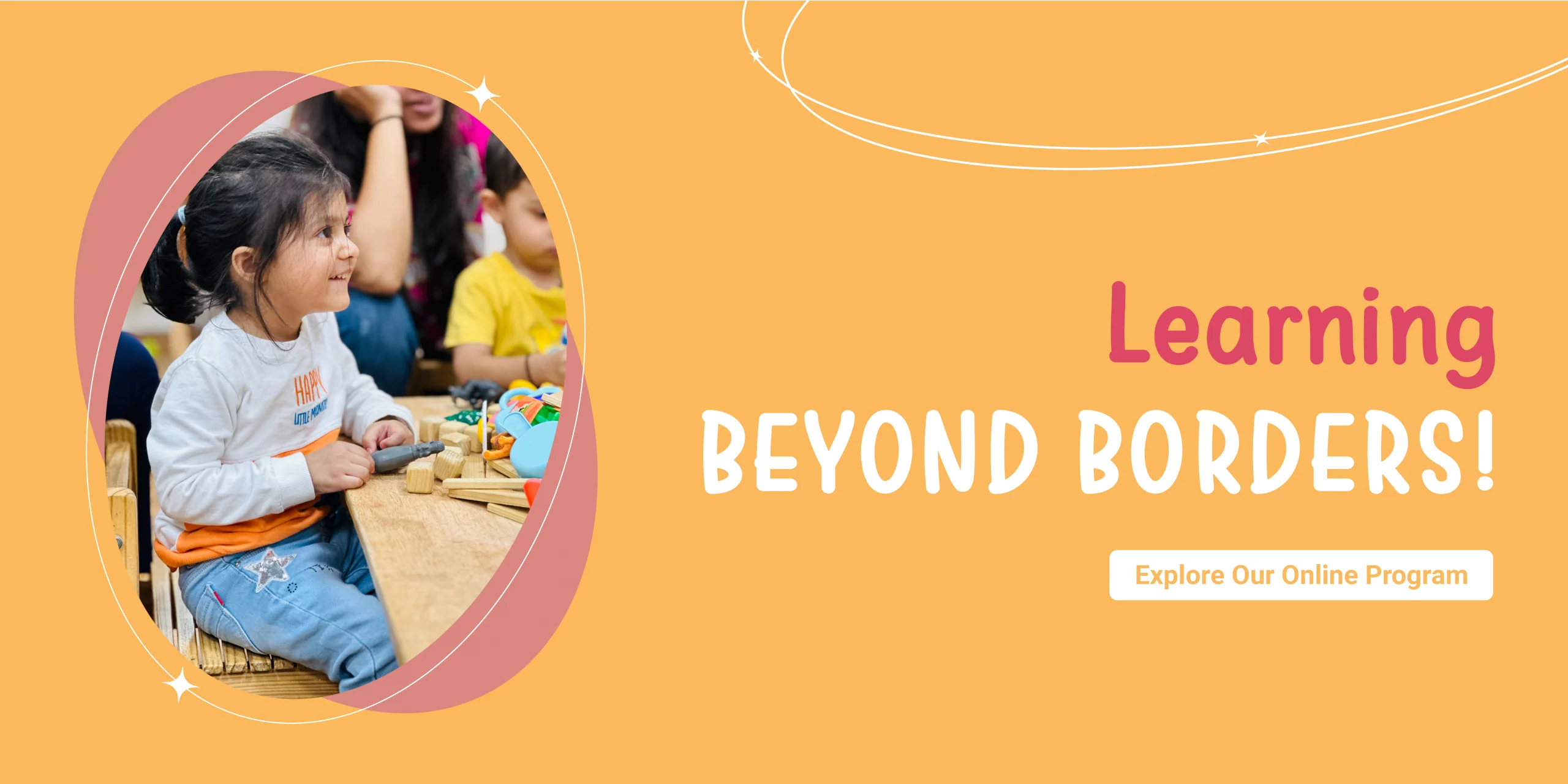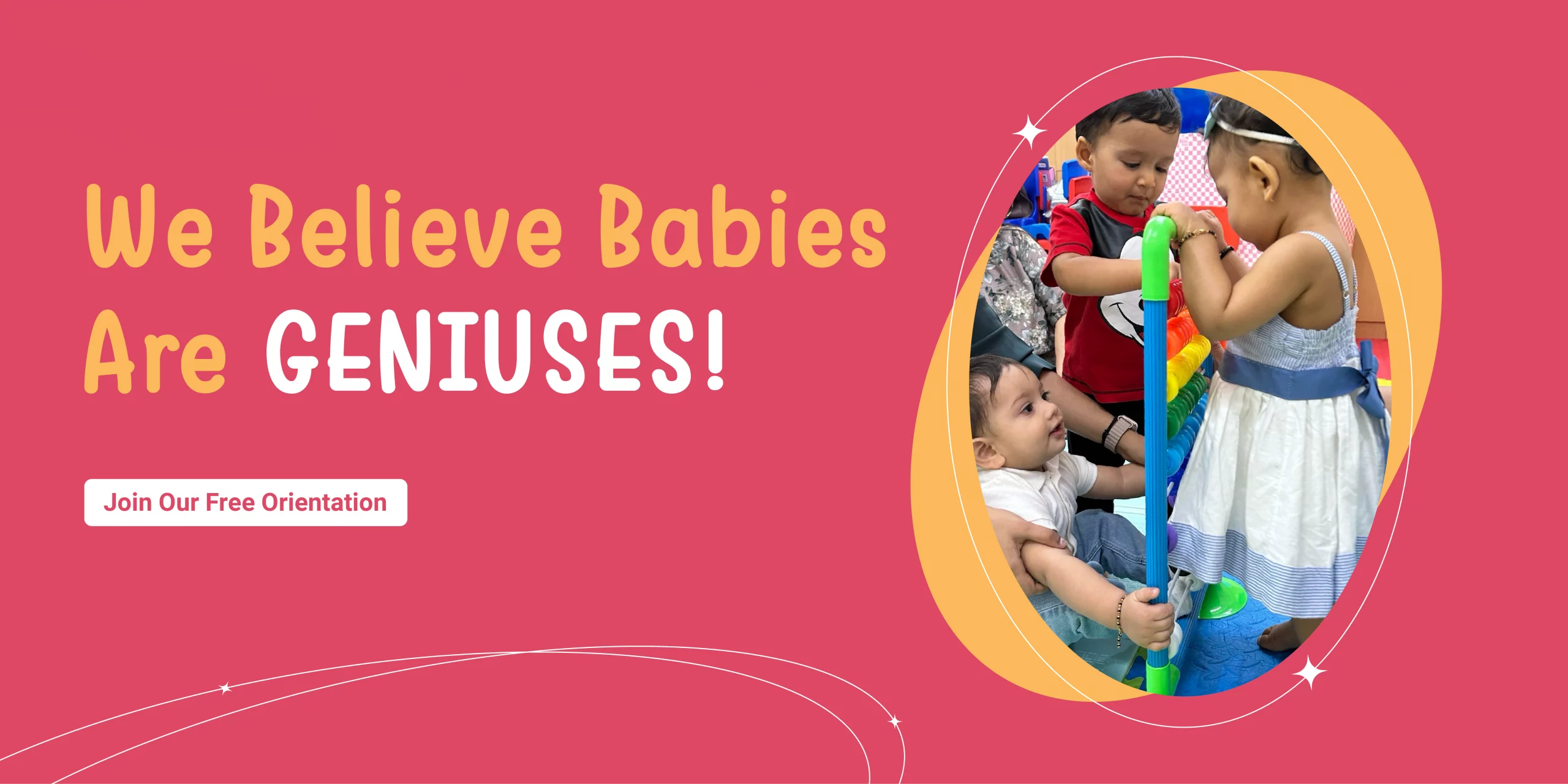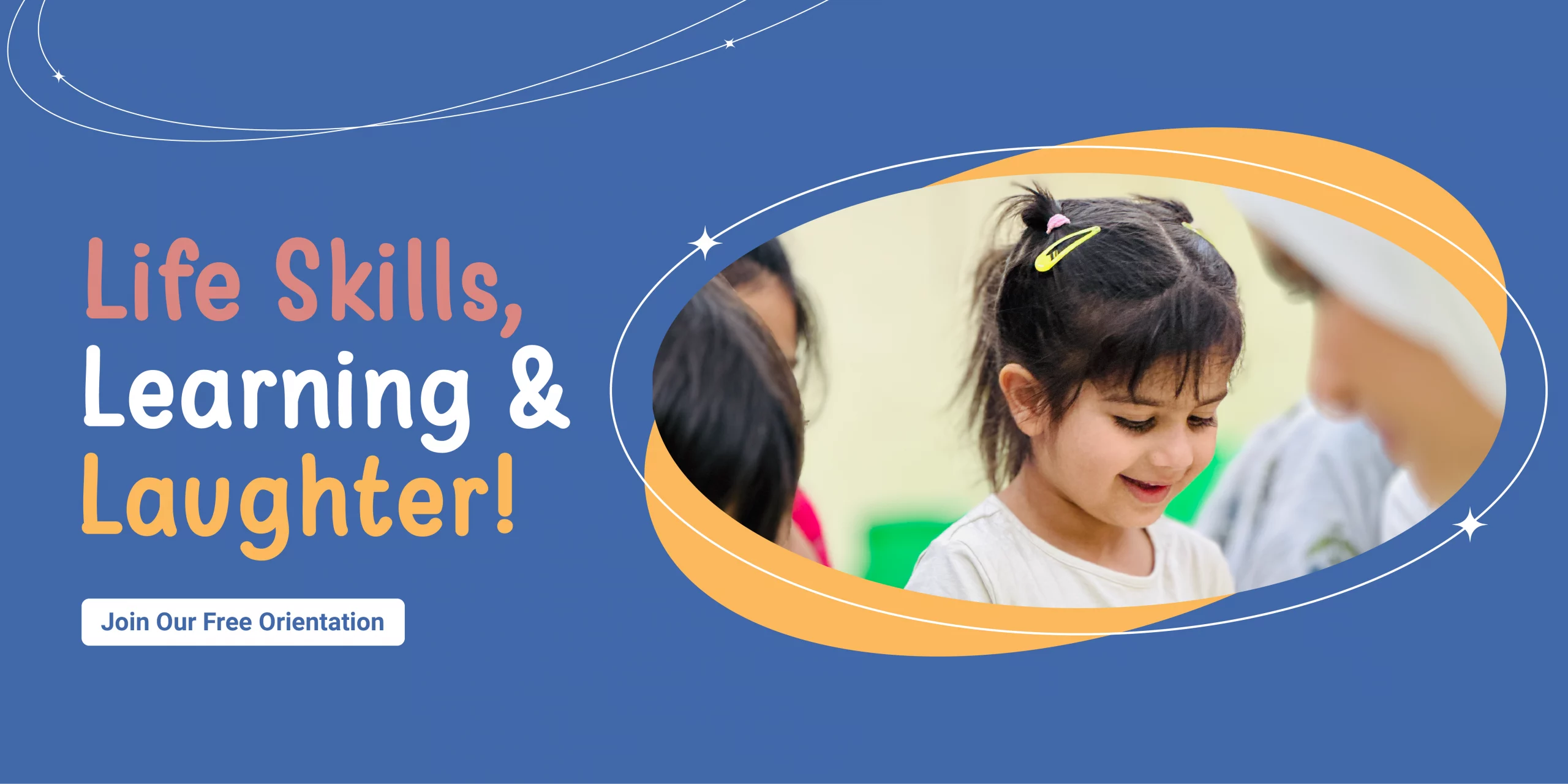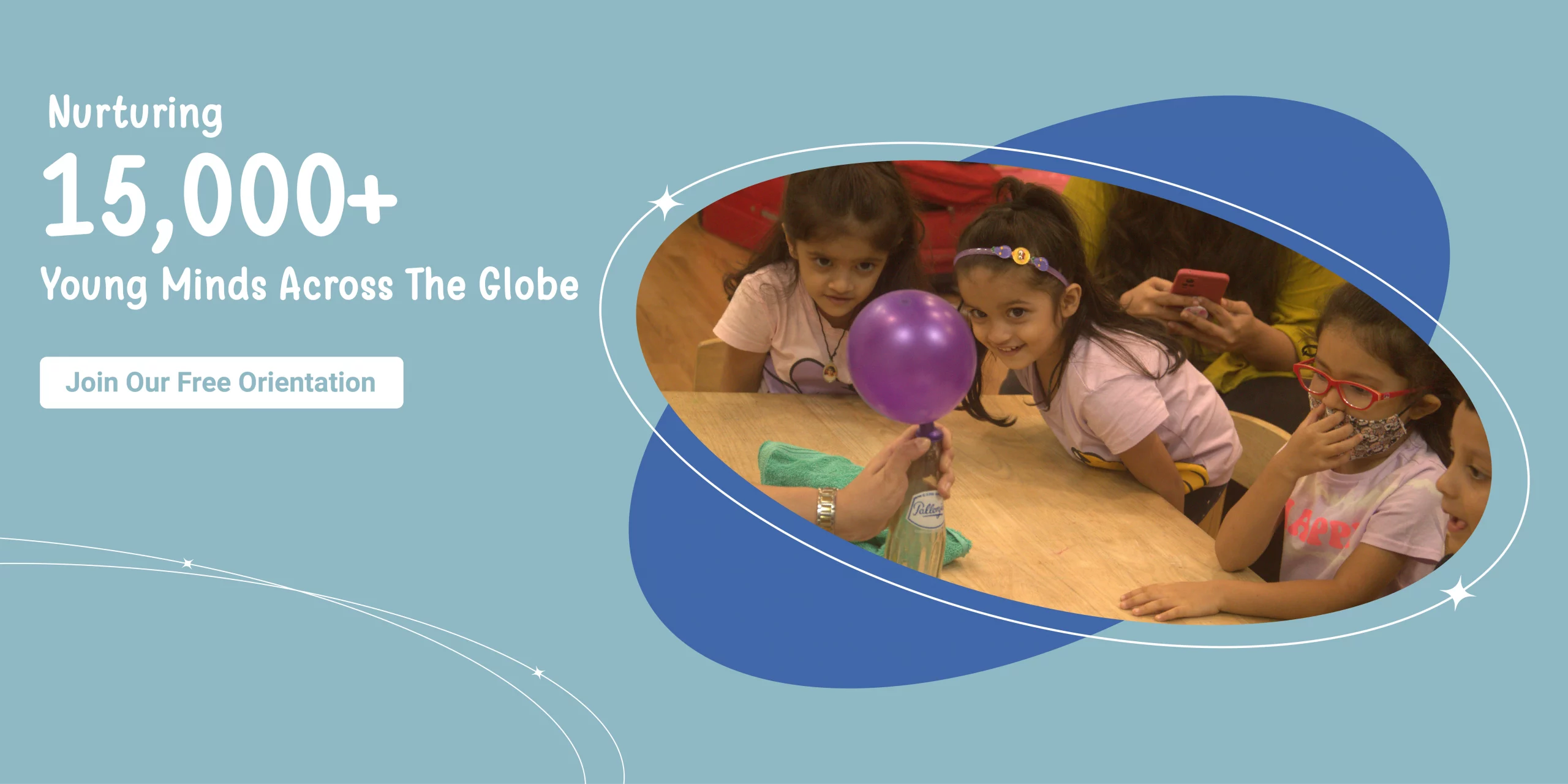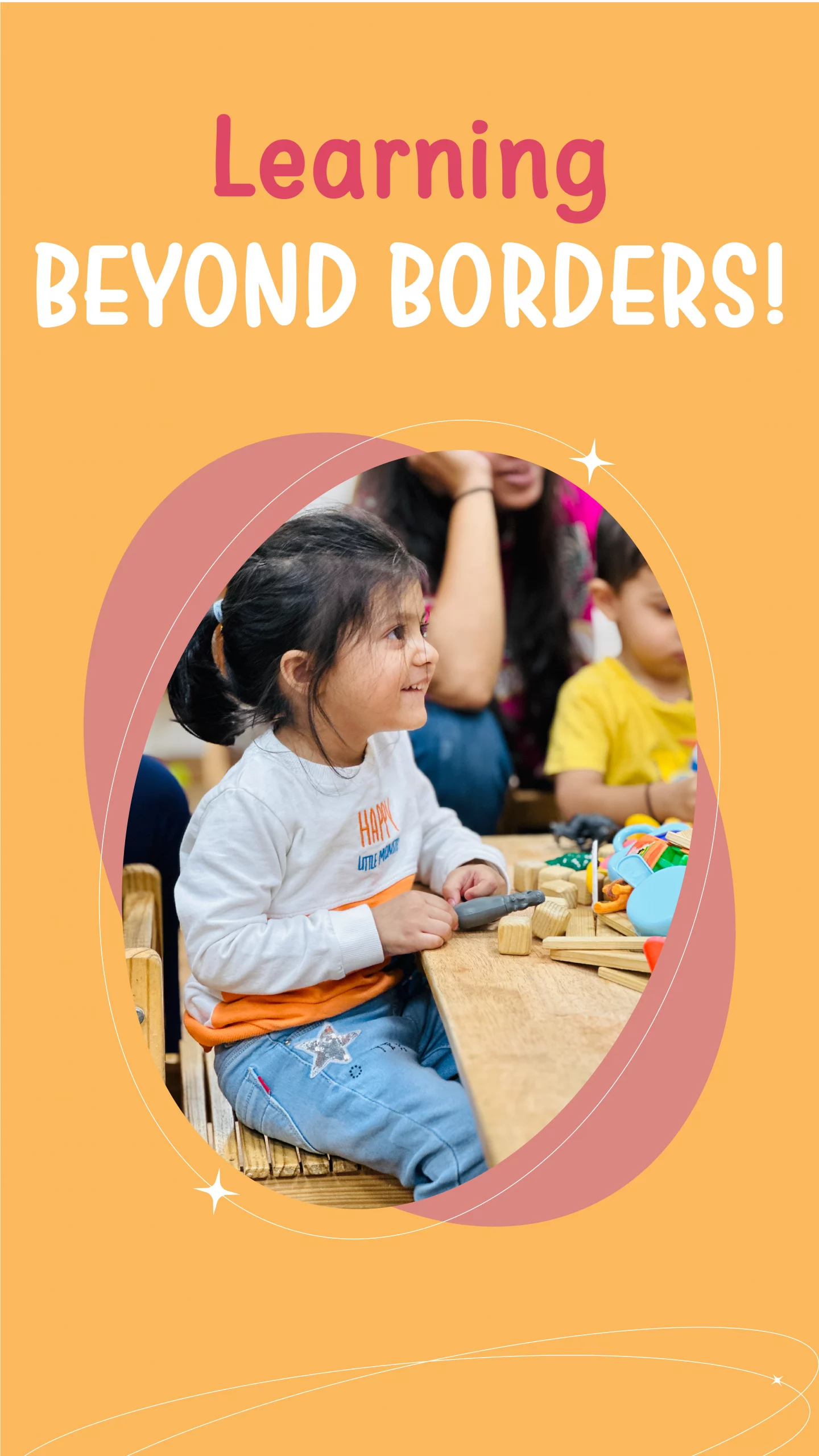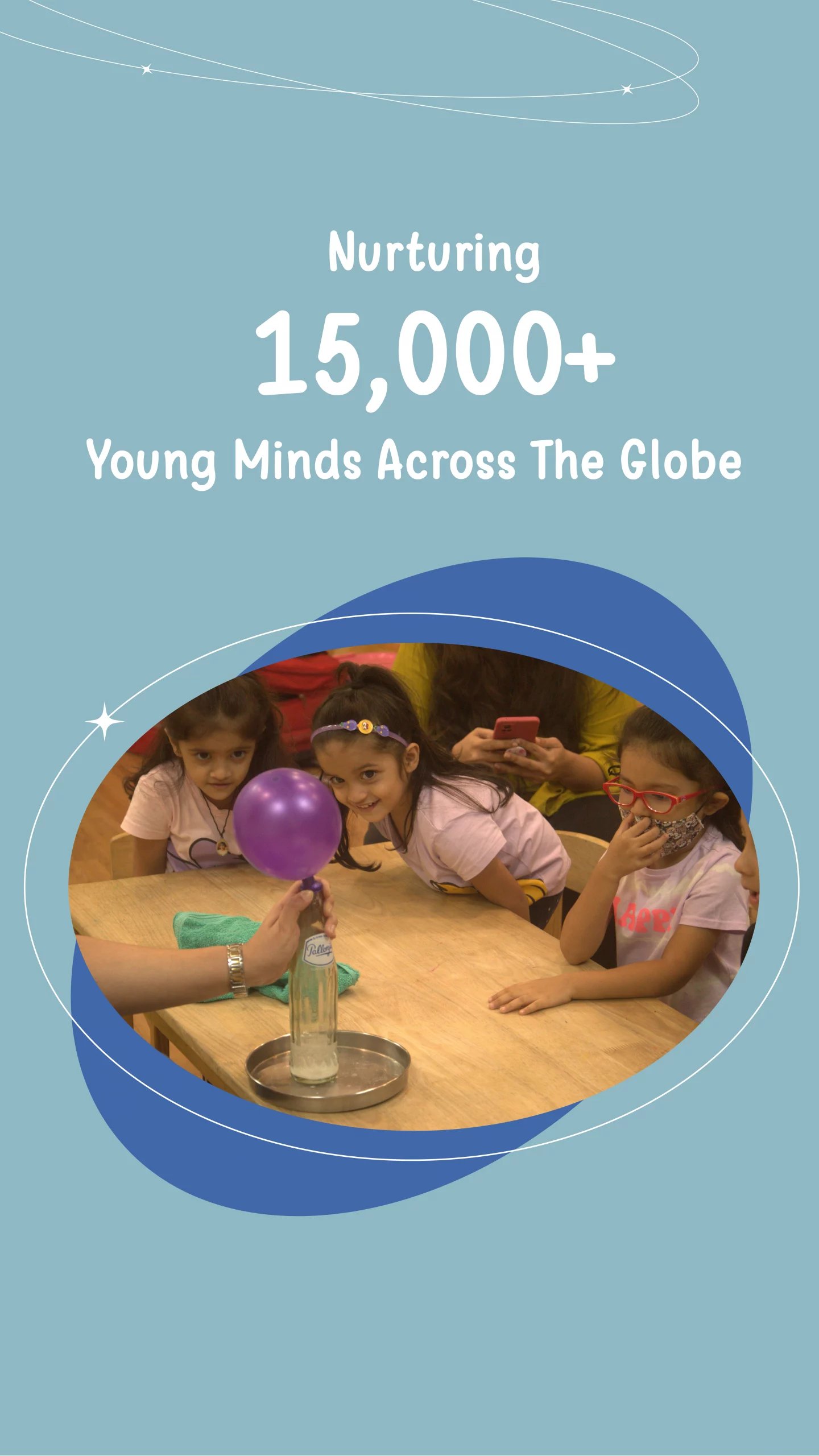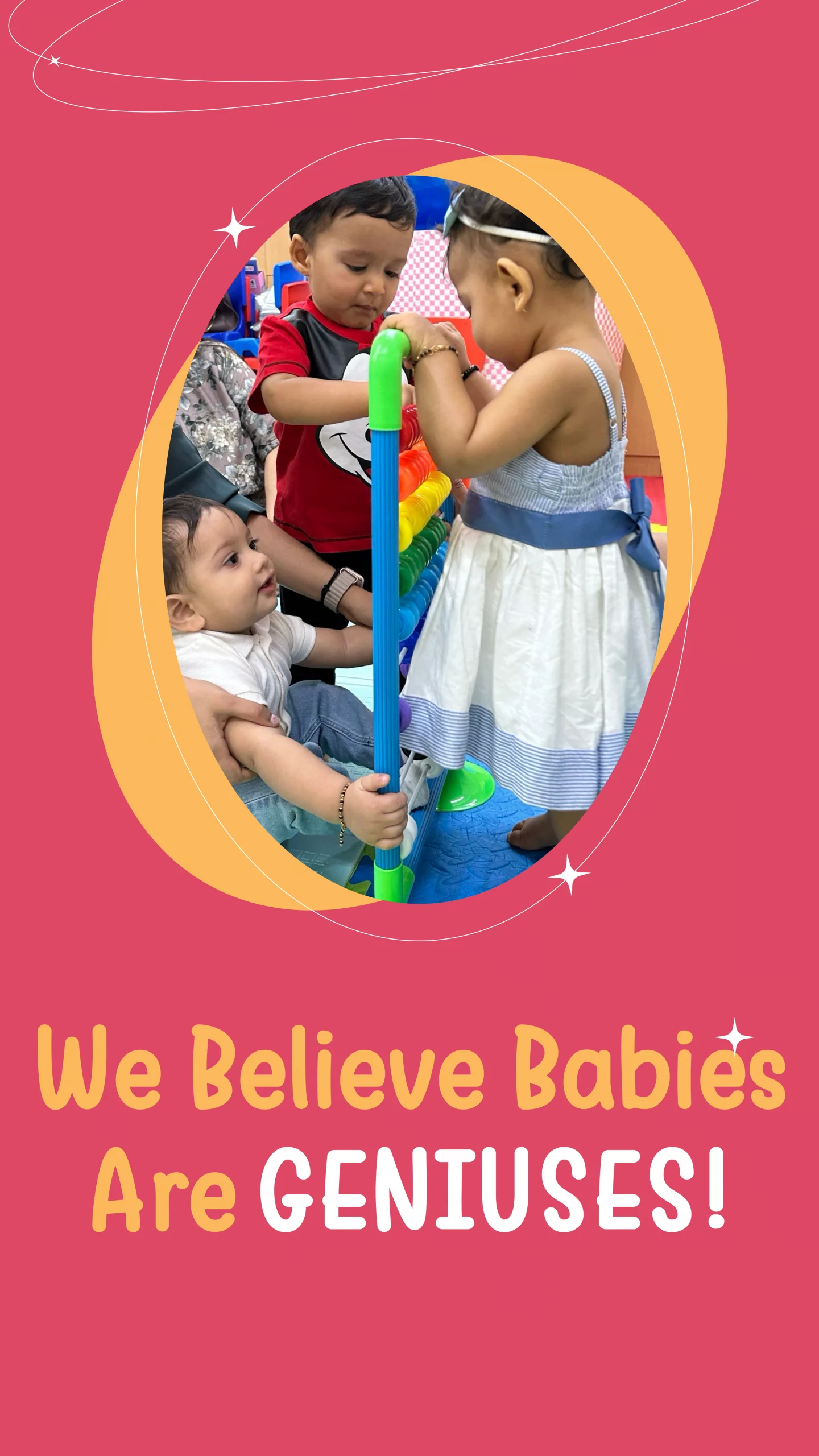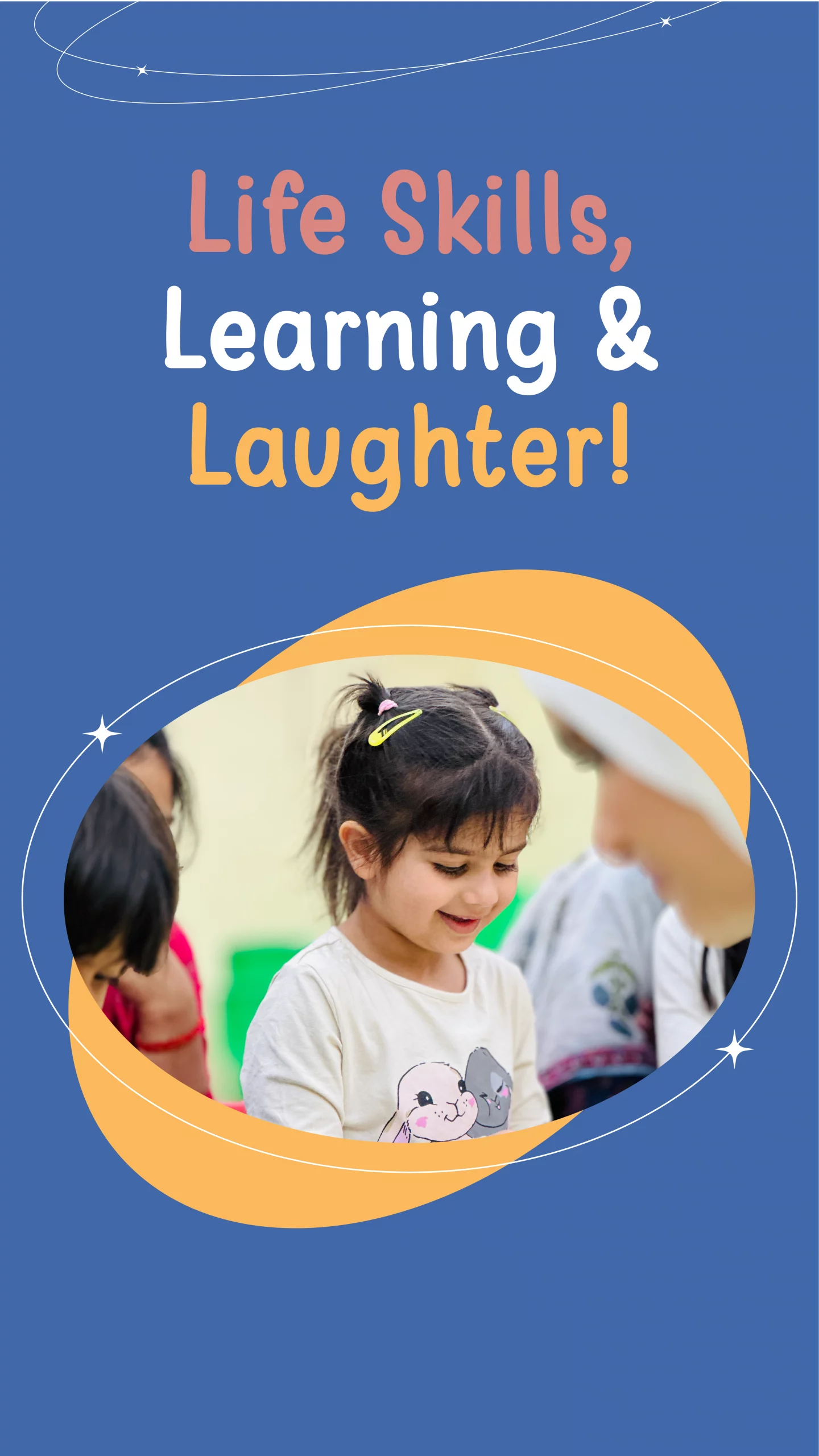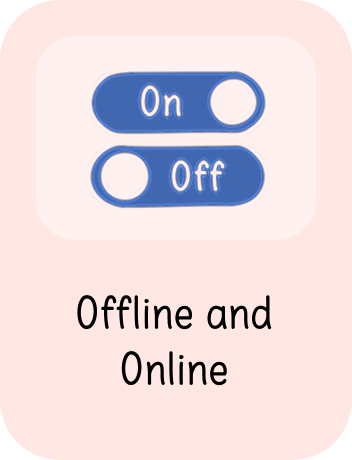
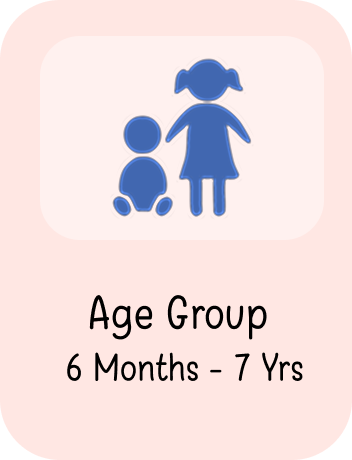
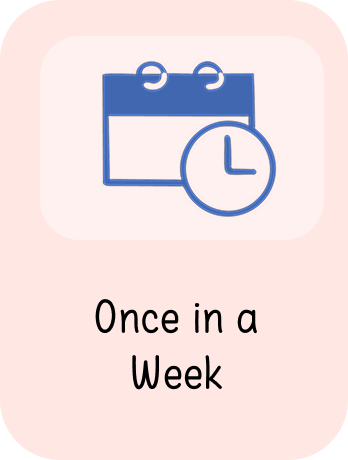
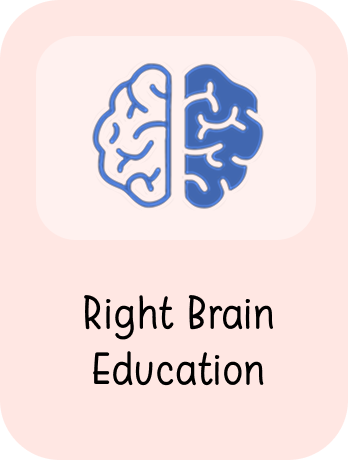






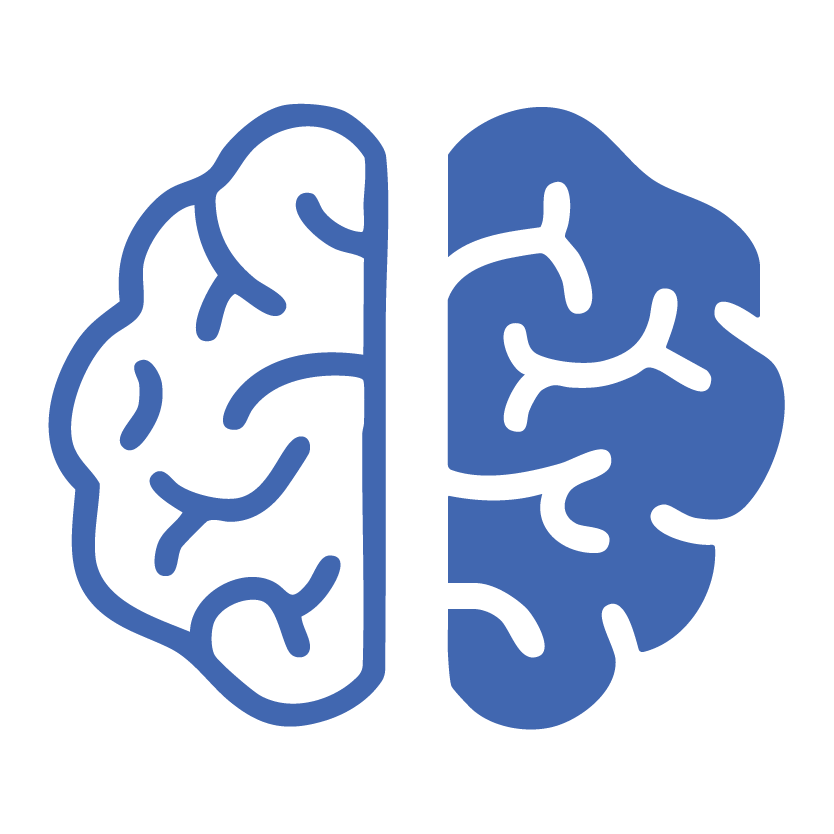
Right brain
education
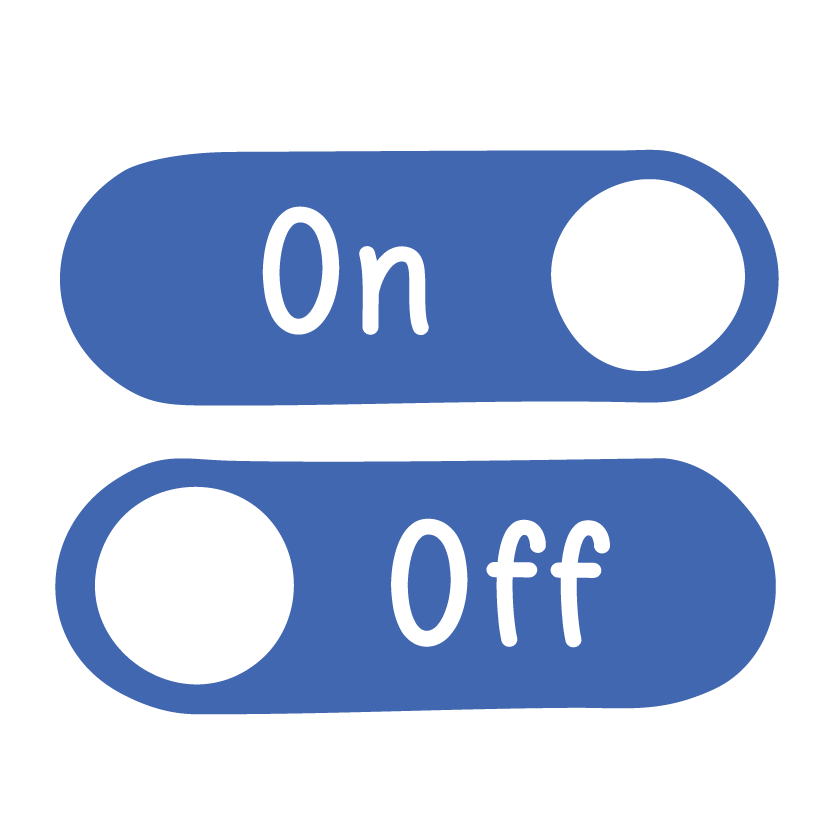
Offline and
Online
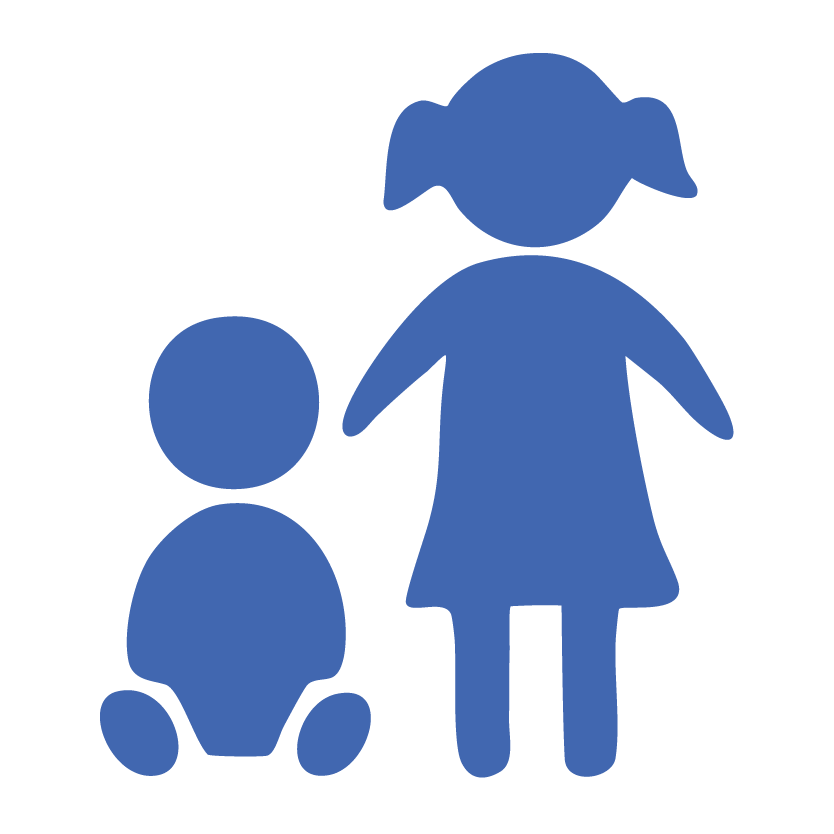
Age group
6 months - 7 years

Once in
a week
What
The Tickle Right method employs early learning tools that stimulates the right brain and develops synergy between both sides of the brain leading to a superior holistic brain development.
Why
The advent of science and research has unraveled excellent information in the fields of brain growth. Our programme gives your child an opportunity to excel and lead in their respective fields of interest.
Who
We humans have a very small window to extract that huge unadulterated potential that the right brain holds. The program is suitable for children between the age group of 6 months to 7 years.

HIGHLIGHTS OF OUR RIGHT BRAIN EDUCATION PROGRAM
First Right Brain Program in India and Overseas with Interactive Activities
Creative thinking, a vital skill that needs to be enhanced during a child’s formative years which fosters problem-solving skills, innovative thinking, and adaptability to various situations.
Our interactive activities are designed to nurture your little one’s creative potential and help their imagination soar.
Creative CRAB
Our aim is to foster every child’s scientific curiosity by providing exposure to hands-on scientific experiments that are not only fascinating, but also engaging.
These experiments help them grasp concepts such as magnetism, chemical reactions, density, gravity, the centripetal force, and much more.
Scientific SEA STAR
We boost our little ones’ memory with the help of interactive, game-based activities and techniques such as Link Memory and Peg Memory which are designed to enhance their photographic memory, associative memory, and much more.
MEMORY MACAW
Science reveals that music aids a child’s brain development by promoting language development, coordination, and emotional expression.
Whether it’s dancing to songs in foreign languages, listening to Beethoven, or learning rhythm with musical instruments, each session includes a memorable musical element.
Musical MONKEY
In order to boost pattern recognition, we conduct a range of 3D structurization activities using matchsticks, blocks, planks, popsicle sticks while also implementing activities that introduce them to the fundamentals of patterning and sequencing.
PATTERN PANDA
Our play-based programme is rooted in empathy, where no fish is forced to fly, and no bird is forced to swim. We believe a positive environment is crucial to make learning a fun-filled and meaningful experience.
Hence, every session is replete with hugs, tickles, and giggles.
empathy ELLE
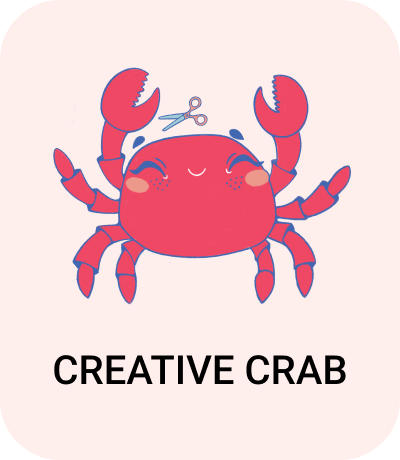
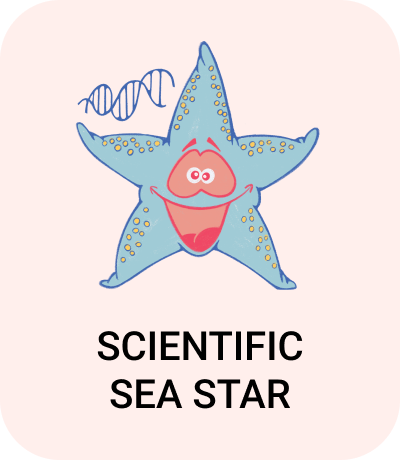
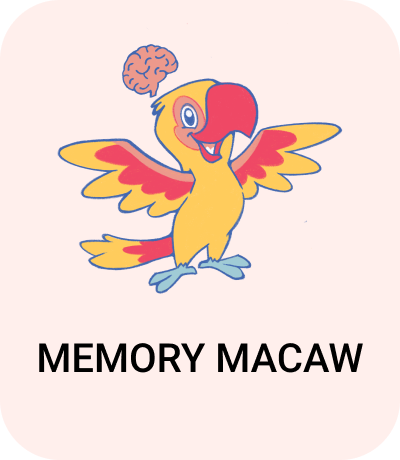
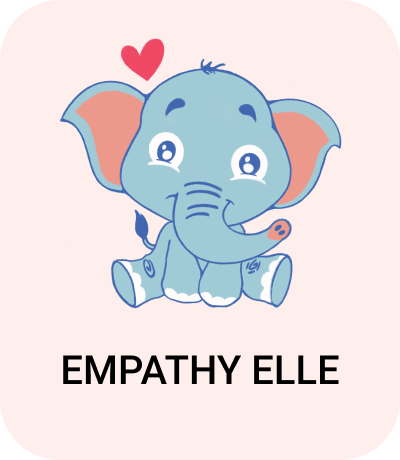
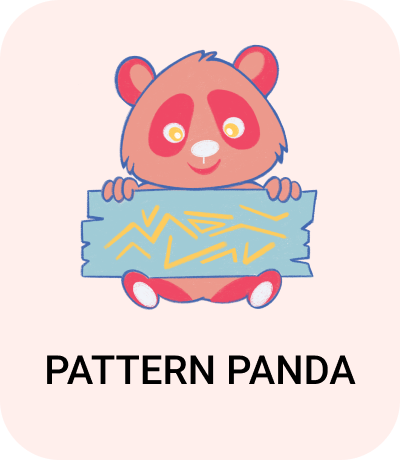
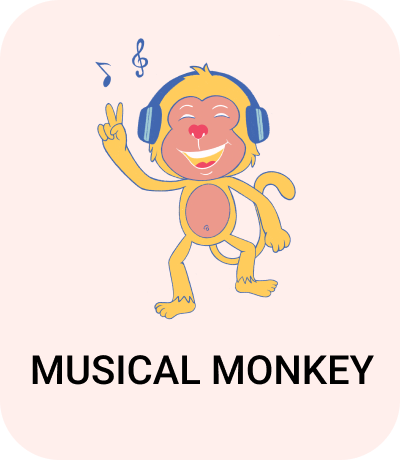

Our interactive activities are designed to nurture your little one’s creative potential and help their imagination soar.

These experiments help them grasp concepts such as magnetism, chemical reactions, density, gravity, the centripetal force, and much more.


Whether it’s dancing to songs in foreign languages, listening to Beethoven, or learning rhythm with musical instruments, each session includes a memorable musical element.


Hence, every session is replete with hugs, tickles, and giggles.
testimonials
-
Kinjal Makwana
Really glad I joined tickle right class. My son did the class for almost 3 years. All thanks to the wonderful team especially our teacher Batul who conducted all the classes with full enthusiasm. Initially I was worried that my son would sit online for a class with concentration or no, but after first 2 classes I was never worried. He used to look forward for the classes (even when we were traveling I took the class materials and he was a part of the class). Thanks a lot to Batul she kept the kids engrossed and always was ready to work in their best interest. The experiments, different stories, variety of concepts and so much more was taught in a fun manner.
I would highly recommend to do the class
Thank you tickle right. -
Anushri Mehra
Rajveer had been doing tickle Right online classes since he was 2. He has always looked forward to the sessions with Nazira ma'am. He absolutely adores her and the way she playfully conducted the classes, being so encouraging and patient. I'm a fan of Right brain training and couldn't have asked for anything better.I have seen his graph going upwards and how much of a difference and how it has stimulated his brain. He's a tickle Right graduate now and misses the classes and Nazu ma'am so much!
-
Pratima Shelar
My son enjoys Tickle Right class, which he fondly calls, Radha teacher's class a lot. All the activities done in the class are very interesting, informative and they not just tickle but really boost the brainpower.
Radha teacher is so energetic, patient and favourite of all the kids. Children really look forward for her class. Thanks Radha teacher and Tickle Right for this innovative, intelligent and equally fun program. -
Mrs Nida Shaikh
Excellent Right Brain Education. A very unique style of training the right brain with exciting activities for kids enhancing their thinking ability Intellectually simplified the learning process. You will be surprised that your child has gained tremendous amount of knowledge with such a simple and fun way of learning. Dont even think. It's worth the money Invest in your child.
-
Sapna Surana
My daughter has been attending the online mode of the tickle right program since over a year and a half and she joins the class every week with a lot of enthusiasm. It really aims to raise happier individuals which is what the world needs more than anything. There will always be someone more successful or more enterprising than you but you may actually be the happiest person in the world if raised right!
-
SK
Tickle Right program has been such an integral part of our weekends for the past 6 months now. My son looks forward to the class and totally loves every bit of it and so do I. A special mention for our teacher Sarah who conducts each class with so much passion and enthusiasm that it totally rubs on all of us. I recommend TR as it is a very unique way of learning. Go get tickled right 🙂
-
Rashi Morbia
Zayn truly looks forward for this class, he lovesss the interactive link, the experiments, he enjoys them thoroughly. Its amazing to see him respond and learn so much at this age. Im so glad we enrolled him in the class, its been i think 1.5 yrs since he started.
-
Ashwita Uchil
Tickle Right, yes I took a right decision of getting my child admitted to this course. Firstly I was super confused, what will they teach, how will it impact the child's brain development, because we never done this things in our childhood. But today I can surely say and recommend everyone to get your kiddo do this. Aaisha's grasping skill has become so sharp, she starts linking the pictures with the things, memorizing. Special thanks to Ms Nikita for motivating her Aaish so much, she is really fun loving and teaches her in a very friendly manner. Super happy with Tickle Right.
-
Nisha Thard
We are extremely grateful for the wonderful learning experience that Rajyaveer has had with Tickle Right. It has been a great journey. Rajyaveer has learnt so much since he was so little.
The quality of the course content and the way it was taught was exceptional. The instructors were knowledgeable and supportive, and their expertise helped him gain a better understanding of the course. -
Kinjal Makwana
Really glad I joined tickle right class. My son did the class for almost 3 years. All thanks to the wonderful team especially our teacher Batul who conducted all the classes with full enthusiasm. Initially I was worried that my son would sit online for a class with concentration or no, but after first 2 classes I was never worried. He used to look forward for the classes (even when we were traveling I took the class materials and he was a part of the class). Thanks a lot to Batul she kept the kids engrossed and always was ready to work in their best interest. The experiments, different stories, variety of concepts and so much more was taught in a fun manner.
I would highly recommend to do the class
Thank you tickle right. -
Anushri Mehra
Rajveer had been doing tickle Right online classes since he was 2. He has always looked forward to the sessions with Nazira ma'am. He absolutely adores her and the way she playfully conducted the classes, being so encouraging and patient. I'm a fan of Right brain training and couldn't have asked for anything better.I have seen his graph going upwards and how much of a difference and how it has stimulated his brain. He's a tickle Right graduate now and misses the classes and Nazu ma'am so much!
-
Pratima Shelar
My son enjoys Tickle Right class, which he fondly calls, Radha teacher's class a lot. All the activities done in the class are very interesting, informative and they not just tickle but really boost the brainpower.
Radha teacher is so energetic, patient and favourite of all the kids. Children really look forward for her class. Thanks Radha teacher and Tickle Right for this innovative, intelligent and equally fun program. -
Mrs Nida Shaikh
Excellent Right Brain Education. A very unique style of training the right brain with exciting activities for kids enhancing their thinking ability Intellectually simplified the learning process. You will be surprised that your child has gained tremendous amount of knowledge with such a simple and fun way of learning. Dont even think. It's worth the money Invest in your child.
-
Sapna Surana
My daughter has been attending the online mode of the tickle right program since over a year and a half and she joins the class every week with a lot of enthusiasm. It really aims to raise happier individuals which is what the world needs more than anything. There will always be someone more successful or more enterprising than you but you may actually be the happiest person in the world if raised right!
-
SK
Tickle Right program has been such an integral part of our weekends for the past 6 months now. My son looks forward to the class and totally loves every bit of it and so do I. A special mention for our teacher Sarah who conducts each class with so much passion and enthusiasm that it totally rubs on all of us. I recommend TR as it is a very unique way of learning. Go get tickled right 🙂
Ready to Learn More?
We at Tickle Right, regularly conduct free orientations to help parents understand the concept of the Tickle Right method in detail and know about its benefits. Contact Us to register for our orientation at your nearest Tickle Right centre.

